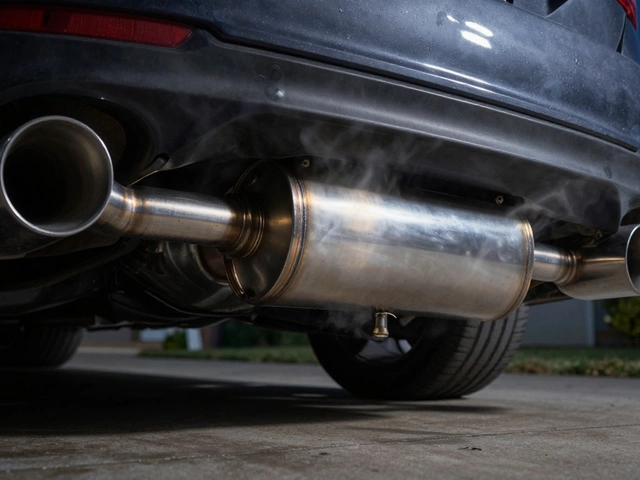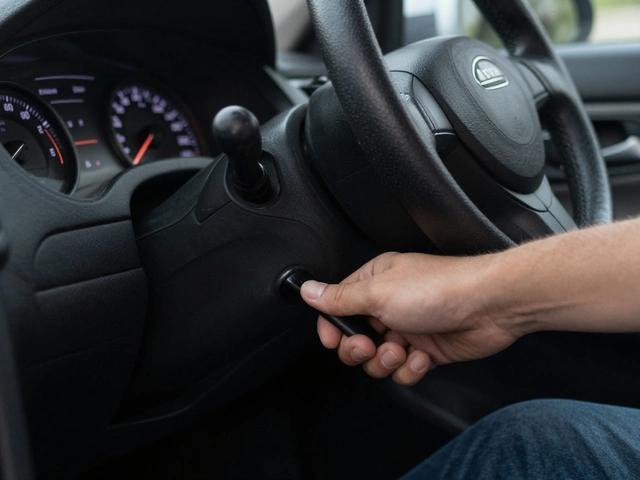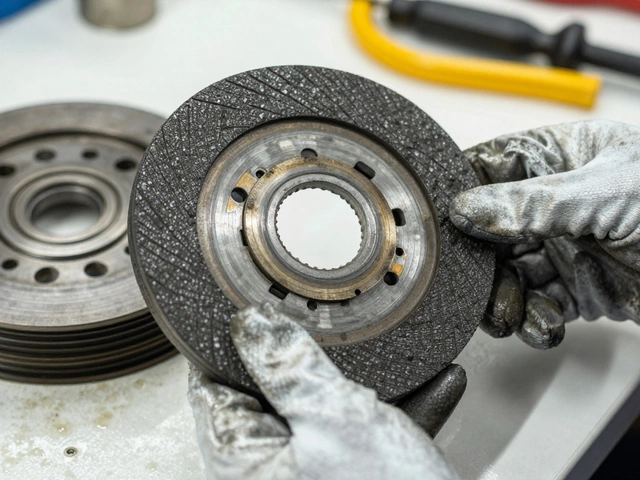Car Battery Voltage Checker
Check Your Battery Health
Enter your battery's resting voltage (engine off, lights off) to see its state of charge and health assessment.
Battery Health Assessment
Wondering if your car will start tomorrow? The secret often lies in the car battery health. A weak battery can leave you stranded, cause erratic electronics, and even affect fuel efficiency. Luckily, you don’t need a garage full of gadgets to get a clear picture. With a few everyday tools and a systematic check, you can gauge the condition of your battery in minutes.
What "Car Battery Health" Actually Means
When we talk about Car battery is a rechargeable lead‑acid (or AGM/Li‑ion) unit that supplies the starter motor and powers the vehicle’s electrical system when the engine is off. Its health is a blend of two factors: capacity - how much charge it can store, and ability to deliver current - especially in cold weather. Over time, sulfation, electrolyte loss, and internal resistance erode these qualities.
Tools You’ll Need
- Digital multimeter - for measuring voltage and resistance.
- Load tester - applies a controlled load to simulate starter draw.
- Safety gloves and goggles - lead‑acid batteries contain corrosive acid.
- Battery charger (optional) - to top up a low‑state charge before testing.
- Clean rag and a small brush - for cleaning terminal corrosion.
Most auto parts stores rent load testers for under $10 a day. If you own a multimeter, it’s already enough for a quick voltage check.
Step 1 - Visual Inspection and Safety Check
Open the hood and locate the battery. Look for the usual suspects:
- Cracked or bulging case - indicates internal gas buildup.
- Leaking electrolyte - white residue or wet spots around terminals.
- Corroded terminals - a whitish or bluish powder.
- Loose connections - ensure the clamps are snug.
If you spot any of these, you may need a replacement or at least a thorough cleaning before proceeding.
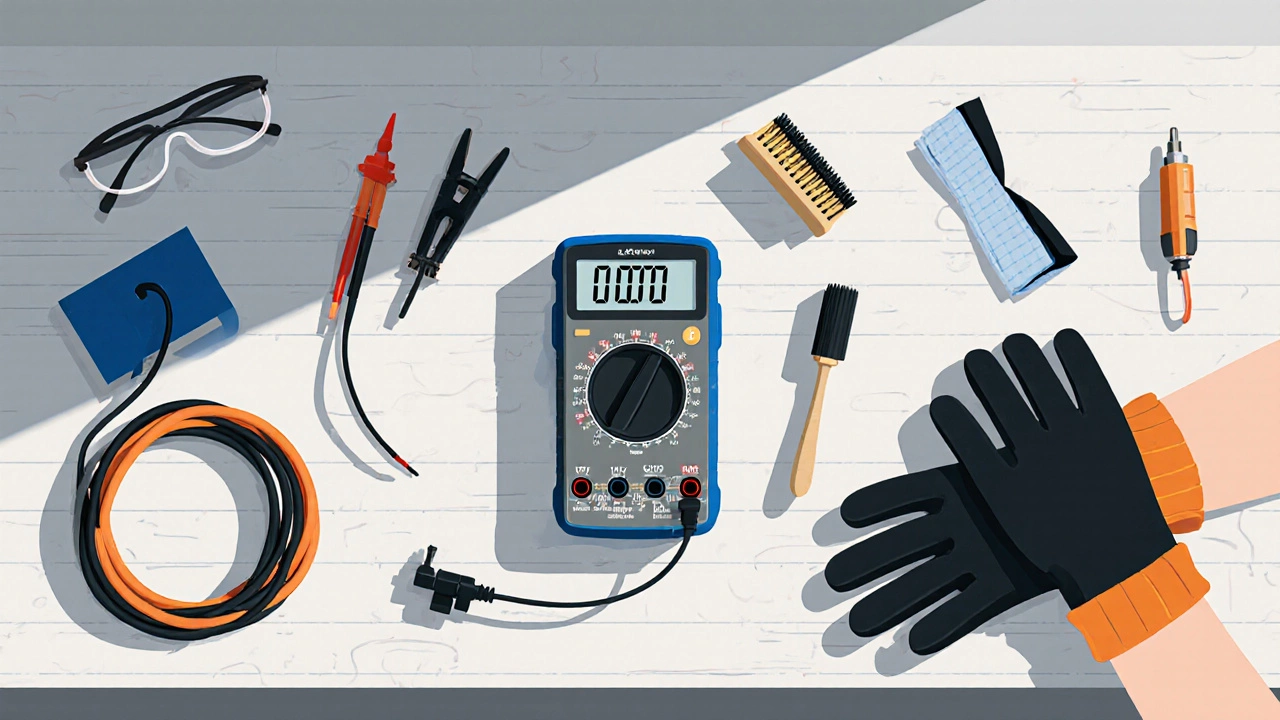
Step 2 - Checking the Resting Voltage
Set your multimeter to the DC 20 V range. With the engine off and all lights off, place the red probe on the positive (+) terminal and the black probe on the negative (-) terminal. Record the reading:
| Voltage (V) | State of Charge | Battery Health Indicator |
|---|---|---|
| 12.6 V or higher | 100 % (Fully Charged) | Excellent |
| 12.4 V | ≈75 % | Good |
| 12.2 V | ≈50 % | Fair - consider charging |
| 12.0 V | ≈25 % | Low - recharge ASAP |
| Below 11.8 V | Very Low | Likely failing |
If the reading is below 12.4 V, charge the battery for at least 30 minutes and re‑measure. Persistent low voltage often points to a bad cell.
Step 3 - The Load Test
A resting voltage tells you a battery can hold a charge, but a load test shows if it can deliver the burst of current needed to crank the engine. Follow these steps:
- Fully charge the battery (or ensure it’s above 12.6 V).
- Connect the load tester’s clamps to the respective terminals.
- Set the tester to apply a load equal to half of the battery’s Cold Cranking Amps (CCA) rating for 15 seconds. If you don’t know CCA, 300 A is a typical midsize‑car spec.
- Watch the voltage readout. It should stay above 9.6 V at 70 °F (21 °C). A drop below this threshold means the battery cannot sustain the required current.
Modern digital load testers even log the voltage curve, making it easy to spot a gradual decline that suggests aging cells.
Step 4 - Checking the Alternator’s Contribution
Sometimes a weak battery is blamed for a dead car, but the alternator might be under‑charging. Start the engine and rev it to around 2,000 RPM. Measure voltage at the battery terminals again. You should see 13.8-14.4 V. Anything lower indicates the charging system isn’t delivering enough power, which will drain the battery over time.

Step 5 - Terminal Clean‑up and Re‑testing
Corrosion adds resistance and can skew voltage readings. Use a mixture of baking soda and water, apply with a brush, and rinse with a damp cloth. Tighten the clamps, then repeat the resting‑voltage test. A noticeable rise (even 0.1 V) after cleaning is a good sign the battery itself is still viable.
When to Replace the Battery
If any of the following conditions are true, plan a replacement within the next few weeks:
- Load test voltage falls below 9.6 V.
- Resting voltage stays under 12.2 V after a full charge.
- Visible case bulge, cracks, or significant electrolyte leak.
- Battery is older than 4-5 years (most manufacturers rate warranties around 48 months).
Even a battery that passes tests can fail suddenly if a single cell is deteriorating. If you rely on the car for daily commutes, the safest bet is to replace when doubts arise.
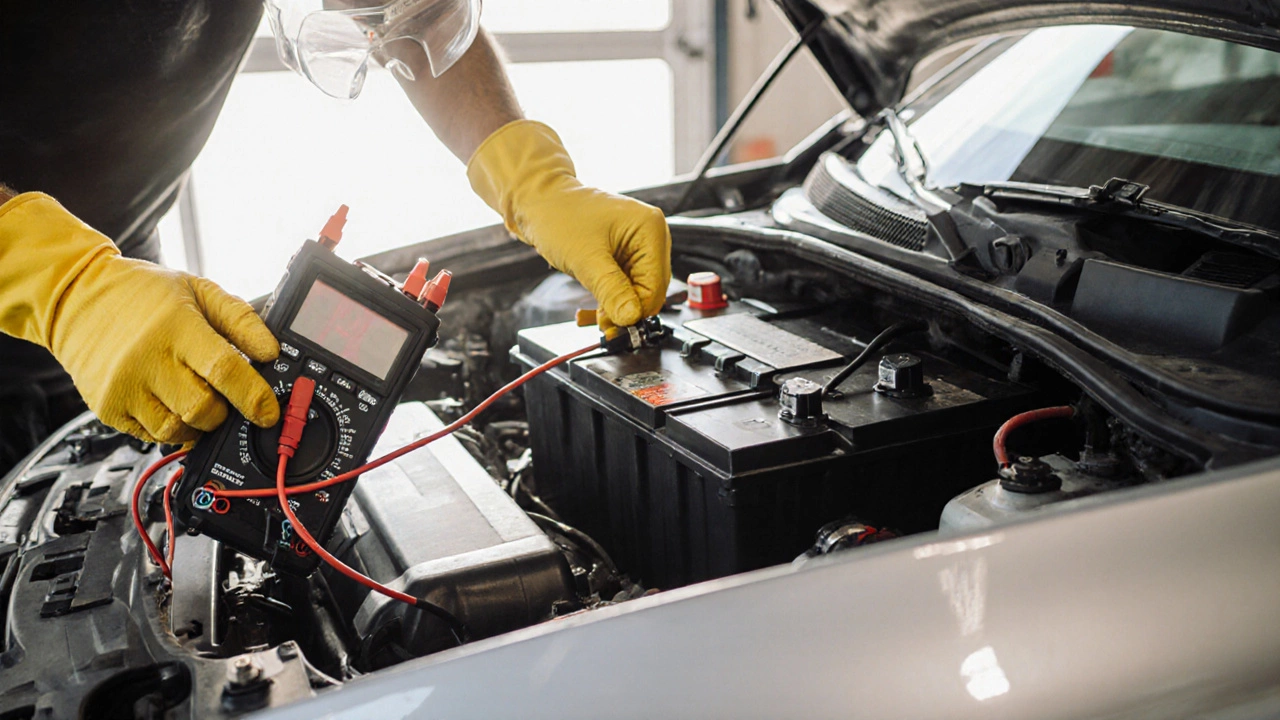
Pro Tips to Extend Battery Life
- Keep it clean. A quick wipe of terminals every few months prevents resistance buildup.
- Avoid deep discharges. Short trips that don’t let the alternator recharge the battery can weaken it.
- Use a smart charger. If the car sits idle for weeks, a trickle charger maintains optimal charge without over‑charging.
- Check temperature effects. Cold weather reduces effective CCA by up to 20 %. In sub‑zero climates, consider a battery with a higher CCA rating.
- Inspect the alternator belt. A slipping belt reduces charging output, accelerating battery wear.
Quick Reference Checklist
| Check | Result | Action |
|---|---|---|
| Visual inspection | No cracks, no leaks | Proceed |
| Resting voltage (engine off) | >12.4 V | Good - continue |
| Load test | >9.6 V at ½ CCA | Good - battery healthy |
| Alternator output (engine running) | 13.8-14.4 V | Good - charging system OK |
| Terminal corrosion | Clean | Clean if needed |
Frequently Asked Questions
How often should I test my car battery?
A quick voltage check every 3 months is enough for most drivers. If you notice dim lights, slow cranking, or live in extreme temperatures, test monthly.
Can I use a regular household multimeter for battery testing?
Yes. Set it to DC voltage, 20 V range, and follow the steps above. Just make sure the probes are in good condition and the battery terminals are clean.
What’s the difference between a load test and a cranking test?
A load test applies a steady, calibrated current (usually half CCA) for a set time, measuring voltage drop. A cranking test measures the actual voltage while the starter motor turns the engine, which can be more demanding but less standardized.
Is a battery with a high CCA always better?
Higher CCA means the battery can deliver more current in cold starts, but it also tends to be larger and pricier. Choose a CCA rating that matches the manufacturer’s recommendation for your vehicle and your local climate.
My car won’t start after a rainy night - is the battery the culprit?
Moisture can increase resistance at the terminals, and cold temperatures lower effective CCA. Perform a voltage check first. If it’s below 12.2 V, try a jump‑start or charge the battery, then retest.




